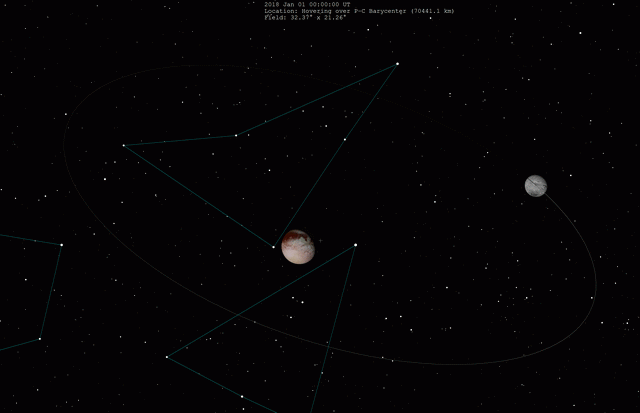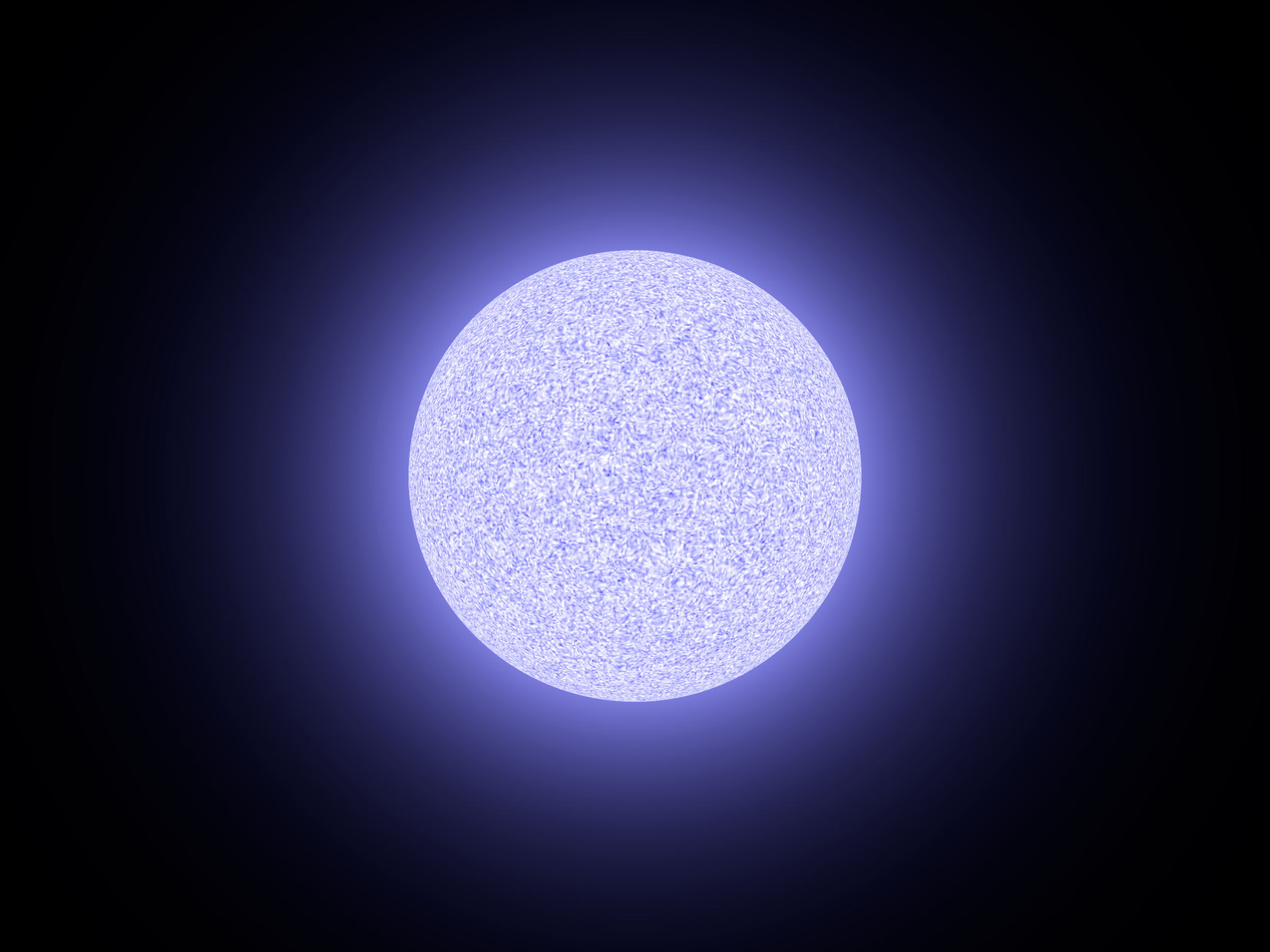|
List Of Transiting Circumsecondary Disks
This is a list of binary systems that have a primary star eclipsing binary, eclipsed, as seen from Earth, by a Circumstellar disc, circumstellar disk around the secondary (including possible ring systems). A circumsecondary disk is a disk of gas and/or dust around a star, white dwarf or substellar object that is a secondary in a star system. In rare cases the system can be aligned in a way that makes it possible for the circumsecondary disk to transit in front of the primary. In some cases the observed dips can be so deep that researchers describe these dimming events as Occultation, occultations. The object J1407b was considered a circumsecondary disk in the past, but later turned out to be more likely a free-floating planetary-mass object with a disk. PDS 110 is a candidate with uncertain status, as later eclipses did not occur. VVV-WIT-07, ASASSN-V J192543.72+402619.0, ASASSN-21co, FY Scuti, OGLE-BLG182.1.162852, and ZTF J185259.31+124955.2 are candidates without much modelling ... [...More Info...] [...Related Items...] OR: [Wikipedia] [Google] [Baidu] |
Binary System
A binary system is a system of two astronomical bodies of the same kind that are comparable in size. Definitions vary, but typically require the center of mass to be located outside of either object. (See animated examples.) The most common kinds of binary system are binary stars and binary asteroids, but brown dwarfs, planets, neutron stars, black holes and galaxies can also form binaries. A ''multiple system'' is similar but consists of three or more objects, for example triple stars and triple asteroids (a more common term than 'trinary'). Classification In a binary system, the brighter or more massive object is referred to as primary, and the other the secondary. Binary stars are also classified based on orbit. Wide binaries are objects with orbits that keep them apart from one another. They evolve separately and have very little effect on each other. Close binaries are close to each other and are able to transfer mass from one another. They can also be classified ba ... [...More Info...] [...Related Items...] OR: [Wikipedia] [Google] [Baidu] |
Giant Star
A giant star has a substantially larger radius and luminosity than a main-sequence (or ''dwarf'') star of the same surface temperature. They lie above the main sequence (luminosity class V in the Yerkes spectral classification) on the Hertzsprung–Russell diagram and correspond to luminosity classes II and III. The terms ''giant'' and ''dwarf'' were coined for stars of quite different luminosity despite similar temperature or spectral type (namely K and M) by Ejnar Hertzsprung in 1905 or 1906. Giant stars have radii up to a few hundred times the Sun and luminosities over 10 times that of the Sun. Stars still more luminous than giants are referred to as supergiants and hypergiants. A hot, luminous main-sequence star may also be referred to as a giant, but any main-sequence star is properly called a dwarf, regardless of how large and luminous it is. Formation A star becomes a giant after all the hydrogen available for fusion at its core has been depleted and, as a r ... [...More Info...] [...Related Items...] OR: [Wikipedia] [Google] [Baidu] |
Algol Variable
Algol variables or Algol-type binaries are a class of eclipsing binary stars that are similar to the prototype member of this class, β Persei (Beta Persei, Algol). An Algol binary is a system where both stars are near-spherical such that the timing of the start and end of the eclipses is well-defined. The primary is generally a main sequence star well within its Roche lobe. The secondary may also be a main sequence star, referred to as a detached binary or it may be an evolved star filling its Roche lobe, referred to as a semidetached binary. When the cooler component passes in front of the hotter one, part of the latter's light is blocked, and the total brightness of the binary, as viewed from Earth, temporarily decreases. This is the primary minimum of the binary. Total brightness may also decrease, but less so, when the hotter component passes in front of the cooler one; this is the secondary minimum. The period, or time span between two primary minima, is very ... [...More Info...] [...Related Items...] OR: [Wikipedia] [Google] [Baidu] |
MWC 882
MWC may refer to: Organisations * Mark Williams Company, a software company * Mennonite World Conference, a global community of Christian churches * Midwest Conference, a U.S. college athletic conference * Mountain West Conference, another U.S. collegiate athletic conference (more often abbreviated as MW) * Music World Corporation, a U.S. music publishing company Other uses * '' Married... with Children'', a U.S. television situation comedy * Ma Wan Channel, a channel between Ma Wan and Tsing Yi islands in Hong Kong * The Minnesota Wrecking Crew, a Canadian sketch comedy troupe * Mobile World Congress MWC Barcelona (formerly but still commonly referred to as Mobile World Congress) is an annual trade show dedicated to the mobile communications industry. The event is held in L'Hospitalet de Llobregat, Spain, at the Fira de Barcelona Gran ..., annual conference and trade show for the mobile phone industry in Barcelona * Monod-Wyman-Changeux model, biochemical model of pro ... [...More Info...] [...Related Items...] OR: [Wikipedia] [Google] [Baidu] |
OGLE LMC-ECL-11893
Ogle may refer to: Places * Ogle County, Illinois, United States * Original name of Ashton, Illinois, a village * Ogle, Kentucky, United States, an unincorporated community * Ogle Township, Somerset County, Pennsylvania, United States * Ogle, Northumberland, England, a village * Ogle Castle in Northumberland, England * Glen Ogle, Scotland People * Ogle (surname) * Ogle family of Northumberland, England * Ogle Marbury (1882–1955), American jurist and politician, Chief Judge of the supreme court of Maryland * Ogle Moore (1801–1874), Irish Anglican priest Titles * Baron Ogle * Earl of Ogle Other uses * Ogle Airport, near Georgetown, Guyana * Ogle Design, a British design consultancy and onetime car maker * OGLE, the Optical Gravitational Lensing Experiment The Optical Gravitational Lensing Experiment (OGLE) is a Polish astronomy, astronomical project based at the University of Warsaw that runs time-domain astronomy, a long-term variability sky survey (1992–prese ... [...More Info...] [...Related Items...] OR: [Wikipedia] [Google] [Baidu] |
Be Star
Be stars are a heterogeneous set of stars with B spectral types and emission lines. A narrower definition, sometimes referred to as ''classical Be stars'', is a non-supergiant B star whose spectrum has, or had at some time, one or more Balmer emission lines. Definition and classification Many stars have B-type spectra and show hydrogen emission lines, including many supergiants, Herbig Ae/Be stars, mass-transferring binary systems, and B stars. It is preferred to restrict usage of the term Be star to non-supergiant stars showing one or more Balmer series lines in emission. These are sometimes referred to as classical Be stars. The emission lines may be present only at certain times. Although the Be type spectrum is most strongly produced in class B stars, it is also detected in O and A shell stars, and these are sometimes included under the "Be star" banner. Be stars are primarily considered to be main sequence stars, but a number of subgiants and giant stars are also ... [...More Info...] [...Related Items...] OR: [Wikipedia] [Google] [Baidu] |
Gaia17bpp
Gaia17bpp is a rare stellar classification, M-type red giant star that exhibited a single large dimming event (G-16-20.5 mag) over 6.5 years. It is located in the Sagitta constellation and is about 27,600 light years away from Earth. Astronomical characteristics The variable star is located in the constellation of Sagitta roughly 27,600 ly (8.5 kpc). Current hypothesis and archival data suggest that Gaia17bpp belongs to a rare family of ultra-long period binary stars where the companion is enshrouded in large optically thick disks reminiscent of Epsilon Aurigae, VVV-WIT-07, and AS Leonis Minoris. The proposed secondary star and disk remain unconfirmed due to the copious amount of intervening interstellar dust, and likely due to the remarkable long timescale period of the system. Discovery and dimming event Gaia17bpp was initially discovered through the European Space Agency, ESA's Gaia (spacecraft), Gaia Photometric Science Alerts (GPSA) in 2022 by astronomers at the ... [...More Info...] [...Related Items...] OR: [Wikipedia] [Google] [Baidu] |
Eta Geminorum
Eta Geminorum (η Geminorum, abbreviated Eta Gem, η Gem), formally named Propus , is a triple star system in the constellation of Gemini. It is a variable star visible to the naked eye, around 380 light years from the Sun. The position of this system near the ecliptic means it is subject to lunar occultation. Nomenclature ''Eta Geminorum'' is the star's Bayer designation. The traditional names ''Tejat Prior'', ''Propus'' (from the Greek, meaning forward foot) and ''Praepes'' and ''Pish Pai'' (from the Persian Pīshpāy, پیشپای, meaning foreleg). In 2016, the International Astronomical Union organized a Working Group on Star Names (WGSN) to catalog and standardize proper names for stars. The WGSN's first bulletin of July 2016 included a table of the first two batches of names approved by the WGSN; which included ''Propus'' for this star. This star, along with γ Gem (Alhena), μ Gem (Tejat Posterior), ν Gem and ξ Gem (Alzirr) were ''Al Han'ah'', "the ... [...More Info...] [...Related Items...] OR: [Wikipedia] [Google] [Baidu] |
B-type Main-sequence Star
A B-type main-sequence star (B V) is a main-sequence (hydrogen-burning) star of spectral type B and luminosity class V. These stars have from 2 to 16 times the mass of the Sun and surface temperatures between 10,000 and 30,000 K. B-type stars are extremely luminous and blue. Their spectra have strong neutral helium absorption lines, which are most prominent at the B2 subclass, and moderately strong hydrogen lines. Examples include Regulus, Algol A and Acrux. History This class of stars was introduced with the Harvard sequence of stellar spectra and published in the ''Revised Harvard photometry'' catalogue. The definition of type B-type stars was the presence of non-ionized helium lines with the absence of singly ionized helium in the blue-violet portion of the spectrum. All of the spectral classes, including the B type, were subdivided with a numerical suffix that indicated the degree to which they approached the next classification. Thus B2 is 1/5 of the way from type B (or ... [...More Info...] [...Related Items...] OR: [Wikipedia] [Google] [Baidu] |
Epsilon Aurigae
Epsilon Aurigae is a multiple star system in the northern constellation of Auriga, the charioteer. Its name is a Bayer designation that is Latinized from ε Aurigae, and abbreviated Epsilon Aur or ε Aur. It is an unusual eclipsing binary system comprising an F0 supergiant and a companion which is generally accepted to be a huge dark disk orbiting an unknown object, possibly a binary system of two dwarf B-type stars. The primary component is officially named Almaaz, pronounced , the traditional name for the system. The distance to the system is still a subject of debate, but data from the Gaia spacecraft puts its distance at around light years from Earth. Epsilon Aurigae was first suspected to be a variable star when German astronomer Johann Heinrich Fritsch observed it in 1821. Later observations by Eduard Heis and Friedrich Wilhelm Argelander reinforced Fritsch's initial suspicions and attracted attention to the star. Hans Ludendorff, however, was the first ... [...More Info...] [...Related Items...] OR: [Wikipedia] [Google] [Baidu] |





